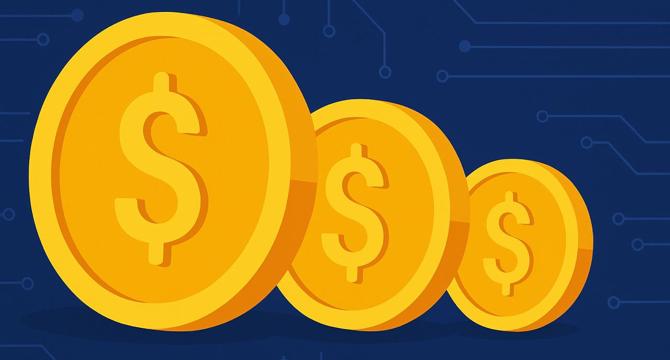Coindoo
3w
57

Image Credit: Coindoo
Stablecoins Now Make Up 1.1% of U.S. Dollar Supply
- Stablecoins, although currently a small portion, are rapidly increasing in supply and now make up 1.1% of the U.S. dollar supply.
- This growth of stablecoins is leading to discussions about their potential to reshape global finance, as illustrated by a recent surge in supply.
- Token Terminal predicts that the ratio of stablecoins to total money supply could continue to rise towards 100%, driven by stablecoin startups' ambitions.
- Developments such as Visa and Mastercard integrating stablecoins, and their use in cross-border payments, are contributing to this trend.
- Governments are also exploring Central Bank Digital Currencies (CBDCs) and stablecoin regulations in response to these changes.
- While currently a small percentage, stablecoins are being used for various purposes like trading, DeFi, remittances, and payroll, indicating a shift in value storage and transfer methods.
- The integration of stablecoins into mainstream financial infrastructure is already underway, suggesting a potential transformative impact.
- Stablecoins like USDC, USDT, and PYUSD are increasingly playing a significant role in the financial ecosystem.
- The trajectory of stablecoins indicates a notable change in how value is managed, with implications for wider monetary integration.
- The article discusses the growing importance of stablecoins and their potential to revolutionize finance.
- The sharp rise in stablecoin supply is attributed to the rapid adoption of blockchain-based digital dollars.
- The article mentions the prediction by Token Terminal that the ratio of stablecoins to total money supply could increase further.
- Industry projections point to stablecoin startups driving this increase towards nearly 100% of the money supply.
- The growing adoption of stablecoins is seen in their use for trading, decentralized finance (DeFi), remittances, and payroll.
- Stablecoin integrations by major companies like Visa and Mastercard are seen as key drivers of this trend in the financial market.
- Given the significant role stablecoins now play in the ecosystem, governments are also exploring regulations for Central Bank Digital Currencies (CBDCs) and stablecoins.
Read Full Article
3 Likes
For uninterrupted reading, download the app